Environment-friendly technology for the entire life cycle of epoxy molded devices
- Mika Ohtake
- Taro Yamashita
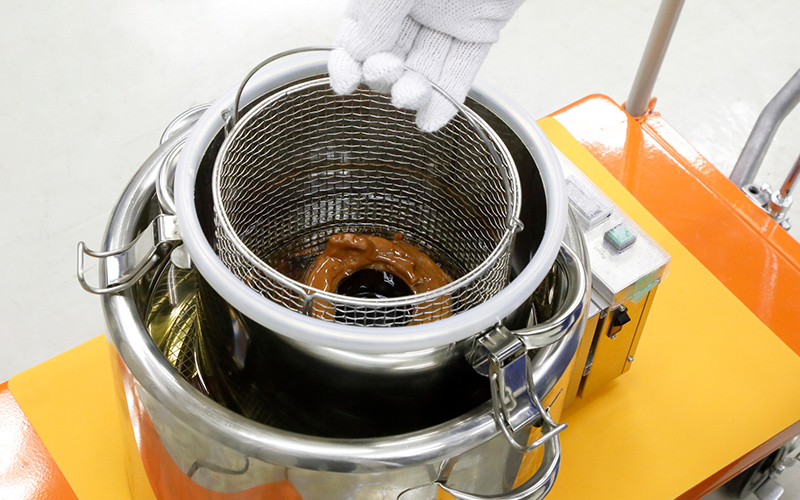
At the G20 Summit held in November 2020, Japan declared that it would reduce greenhouse gas emissions to net zero by 2050 and realize a decarbonized society. As one of the concrete goals, the Ministry of Economy, Trade and Industry (METI) has been playing a center role of conducting a study to eliminate the use of gasoline-powered vehicles in 2035 and replace them with electric vehicles such as hybrid vehicles, plug-in hybrid vehicles, electric vehicles, and fuel cell vehicles.
In order to achieve a decarbonized society, it is necessary to take measures with a comprehensive approach. For example, in the case of electric vehicles, even if they do not emit carbon dioxide when driving, if they use electricity generated by emitting a lot of carbon dioxide in a different place, the fundamental problem cannot be said to have been solved.
TAKAOKA TOKO is trying to establish environmental-friendly technology from the viewpoint of the entire life cycle in the development of epoxy molded devices. Epoxy molded device is a general term for devices in which coils and iron cores are molded (covered) with epoxy resin that hardens when heat is applied and has excellent mechanical strength and adhesiveness.
Two engineers are now enthusiastic about efforts to reduce carbon emissions throughout the entire life cycle from the manufacture of an epoxy molded device to its use, and finally to its disposal and recycling.
Technology
Environmental-friendly technology has no real meaning unless the life cycle of the product is considered as a whole.
The Life Cycle Assessment (LCA), for which international guidelines have been established by the International Organization for Standardization (ISO), stipulates methods for evaluating the environmental impact of products at each stage from resource extraction to processing, sales, consumption, and disposal. This is to understand the load and impact on the environment over the entire life cycle. Especially for epoxy mold resin products, there are currently few companies that consider the entire life cycle when developing products. Mika Ohtake, chief of the materials technology group, has her eye on this.
"If we establish a technology that can reduce the carbon of epoxy molded products throughout their life cycles, it will be a major strength of TAKAOKA TOKO."
With that in mind, I made a proposal to the company and started development. In the power industry, sulfur hexafluoride gas is used in high-voltage power devices. However, since this gas has a high global warming potential, it is also designated as a target for emission control under the Kyoto Protocol. For this reason, electric power devices that use sulfur hexafluoride gas are operated under strict control so that gas is not released into the atmosphere. Types of insulating materials include gases, liquids, and solids. Each has its advantages and disadvantages, and not all of them can be replaced. The mission of this development is to develop environmentally friendly technologies throughout the entire life cycle, such as reducing the amount of sulfur hexafluoride gas used by expanding the application range of epoxy molds, which are solid insulating products, realizing carbon neutrality using plant-derived epoxy resins, and realizing a recycling-type product cycle by melting epoxy molds. However, its development was not easy.

Profile
-
 Mika OhtakeTechnology Development Division
Mika OhtakeTechnology Development Division
Research and Development Center
Material Technology Group
Chief -
 Taro YamashitaTechnology Development Division
Taro YamashitaTechnology Development Division
Research and Development Center
Material Technology Group
Section Manager
Focus on carbon-neutral materials
The goal is to establish environmental-friendly technology that takes recycling into account.
Ohtake:Epoxy-molded devices have excellent electrical insulation and mechanical strength, but carbon dioxide is inevitably generated in the heat-curing process and the disposal/recycling process. Therefore, based on the concept of carbon neutral, we focused our attention on biomass raw materials that absorb carbon dioxide during the growth process as plants. We finally chose linseed oil as an epoxy resin material because it is easily available and provides the required strength. In combination with a wide variety of materials, we have studied crack resistance and strength, and have finally reached the point where we can apply our products. Aiming to be applied to power devices that are infrastructure devices and require high reliability, we are evaluating long-term stability over the next few years.
Yamashita:Generally, when plant-derived materials are used, performance such as strength is inferior, and handling is required differently from the conventional ones, resulting in an increase in labor and cost. However, through the development of material formulations and processes so far, we have managed to improve performance and cost to the point where we can see the prospect of product application.
Product development of epoxy molded devices using biomass resin has not yet been realized by other companies, and this is a necessary and important initiative in the development of environmental-friendly technologies throughout the product life cycle. For this reason, I have also been thinking of supporting Ohtake's research.
Ohtake and Yamashita are the core members of this team. Ohtake decides the outline of how to proceed with the research, and Yamashita follows up on the details while cooperating with the design and manufacturing departments within the company. The two will overcome rough seas every day with the aim of realizing a low-carbon society.

Their ultimate goal is to reuse epoxy mold resin
Looking ahead to high hurdles while being motivated by rewarding work.
Ohtake:Recycling has been started by using other companies' technology to dissolve epoxy resins and unsaturated polyester resins, which are base materials for fiber-reinforced resins, in epoxy molded devices. When we actually melted the product, we found that the metal part could be reused as it is. The problem is that epoxy molds contain fillers that play a role of reducing resin costs and suppressing thermal expansion and contraction, but this must be separated from the epoxy resin melt. We are researching a method for efficient separation by using a filter that does not allow the powdery filler to pass through but allows the liquid epoxy resin solution to pass through. Several types of filters were tested to find what gave the best results.
Yamashita:With regard to reuse, the metallic parts can be recovered cleanly by dissolving the resin. This depends on the devices, but can be reused as they are. It is known that the removed filler can also be reused. The problem is the dissolved resin. So far it has not been possible to reuse it as a material for epoxy molded products. Currently, the most effective reuse method is to use it as fuel, and it is known that it can be used as a fuel equivalent to heavy oil.
Ohtake: In the future, we believe that our goal is to reuse the melted resin as an epoxy mold resin material. Currently, various methods are being tried, but it is not possible to completely return the resin to the original resin, and it is a reality that reuse is quite difficult. However, our goal is to establish the environmental-friendly technology throughout the life cycle of epoxy molded device, so we definitely want to achieve that. It's difficult, but we feel rewarding.
Ohtake, who has been interested in environmental issues since he was an elementary school pupil. He says he has spent his life with many questions in his mind.
"There's a solar car that runs on solar cells, but I wonder why it wouldn't be more popular. If all cars run on solar cells, they won't emit carbon dioxide, and they won't even need fuel."
It was only since he entered a university that he knew that making solar cells that power solar cars emits a lot of carbon dioxide, that the energy conversion efficiency is not high, that they are easily affected by the weather, and that they are very expensive to begin with.
"Environmental issues must be considered more fundamentally and in a comprehensive manner."
Ohtake, who was originally fond of science, went on to a science university. "As an engineer, I want to work at a company involved in manufacturing," so he got a job at TAKAOKA TOKO. He says that in an environment where it is easy to do what he wants to do, he continues to search for answers to environmental problems that he have been questioning since he was a child.
Yamashita, who is a little older than Ohtake and supports him, also longed for manufacturing and wanted to "use his own hands to create something concrete" and joined in TAKAOKA TOKO after studying materials and raw materials at a science university. Today, the two are tackling future environmental issues while looking at the entire life cycle.

Test device for dissolution evaluation of epoxy mold equipment
Latest articles
-
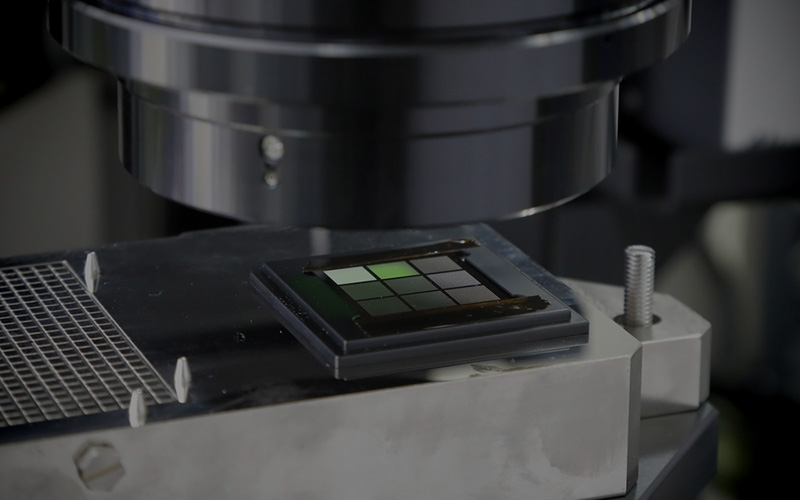 interviewThe confocal surface shape measurement system for semiconductor reliabilityIt is no exaggeration to say that semiconductors are used in everything supporting our lives and industry in modern society. Examples include smartphones, home appliances, and industrial products in various fields.
interviewThe confocal surface shape measurement system for semiconductor reliabilityIt is no exaggeration to say that semiconductors are used in everything supporting our lives and industry in modern society. Examples include smartphones, home appliances, and industrial products in various fields. -
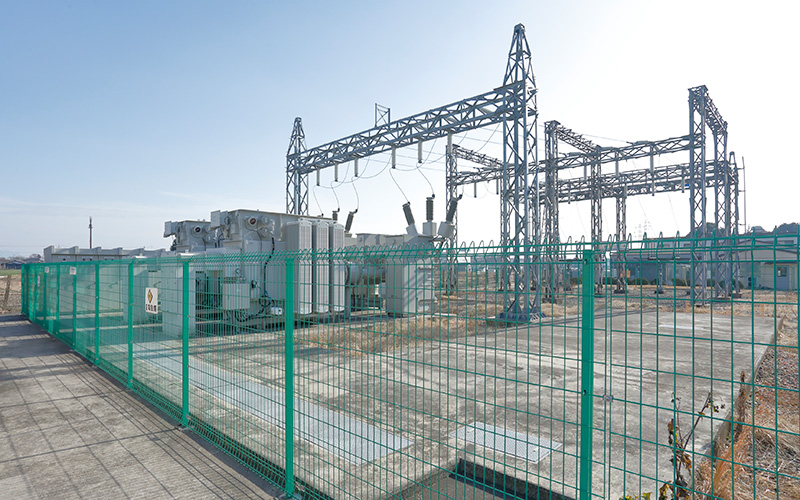 interviewImplementation of a Sensor Solution for Substation DigitalizationGlobal energy prices remain at high levels. The presumed cause is the imbalance between energy supply and demand due to recovery in economic activity from the spread of COVID-19, unseasonable weather, disasters, Russia's invasion of Ukraine, and other factors. The soaring energy prices naturally have an impact on the electricity sector, putting not only ordinary households but also electricity suppliers, or electric power companies, in a difficult situation. Power companies are being forced to cut costs to keep power prices down.
interviewImplementation of a Sensor Solution for Substation DigitalizationGlobal energy prices remain at high levels. The presumed cause is the imbalance between energy supply and demand due to recovery in economic activity from the spread of COVID-19, unseasonable weather, disasters, Russia's invasion of Ukraine, and other factors. The soaring energy prices naturally have an impact on the electricity sector, putting not only ordinary households but also electricity suppliers, or electric power companies, in a difficult situation. Power companies are being forced to cut costs to keep power prices down. -
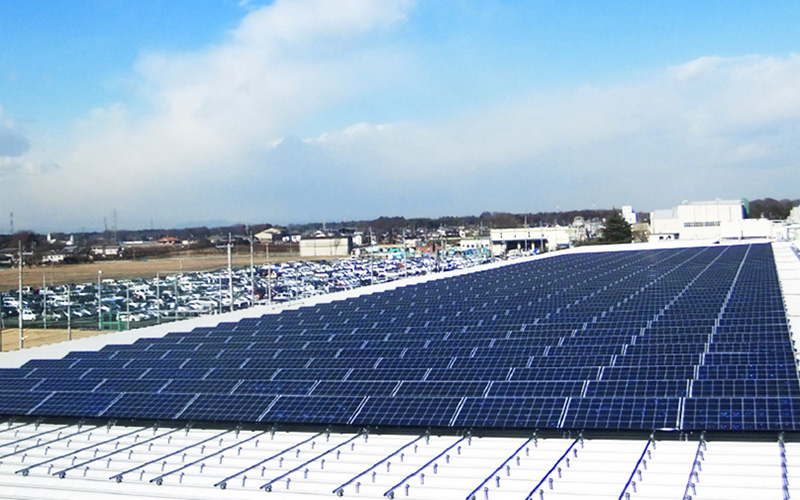 interviewDevelopment of Techniques for Solar Power Generation Prediction Using AIIn order to promote carbon neutrality, the use of renewable energy that doesn't emit CO2 is expanding.Among renewable energy resources, solar power generation is an important one which will continue to grow in popularity.
interviewDevelopment of Techniques for Solar Power Generation Prediction Using AIIn order to promote carbon neutrality, the use of renewable energy that doesn't emit CO2 is expanding.Among renewable energy resources, solar power generation is an important one which will continue to grow in popularity. -
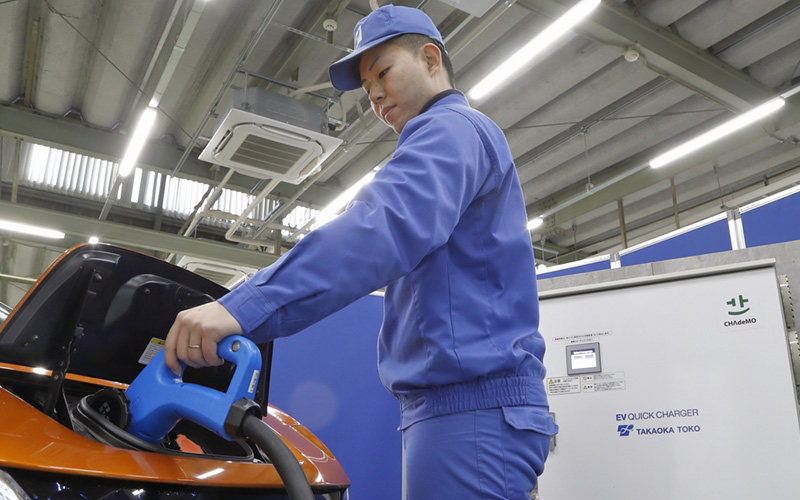 interviewDevelopment of Medium-Capacity Quick Charger for Electric VehiclesIn anticipation of expansion of EV charging infrastructure in Japan, where the EV shift is accelerating, we worked on the development of the “medium-capacity quick charger (B11)” as a charger that meets the needs for intermediate chargers between normal chargers and quick chargers. This article introduces the features of the product, ingenuity in the development process, and our future vision.
interviewDevelopment of Medium-Capacity Quick Charger for Electric VehiclesIn anticipation of expansion of EV charging infrastructure in Japan, where the EV shift is accelerating, we worked on the development of the “medium-capacity quick charger (B11)” as a charger that meets the needs for intermediate chargers between normal chargers and quick chargers. This article introduces the features of the product, ingenuity in the development process, and our future vision.
